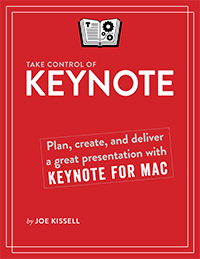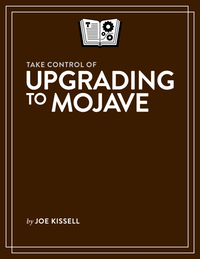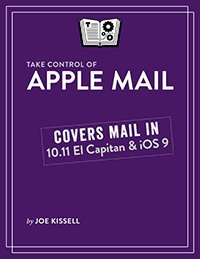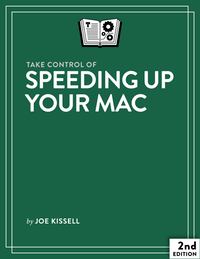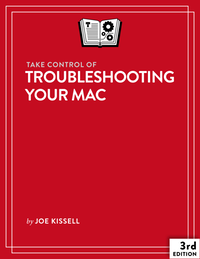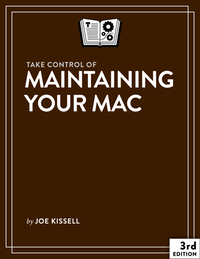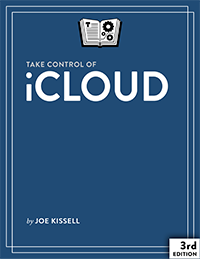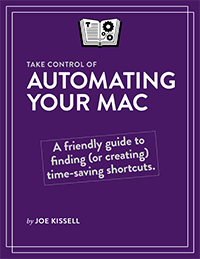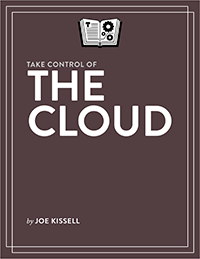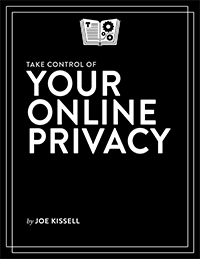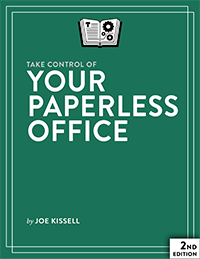Take Control of Keynote
Take Control Books already had titles on Apple’s Pages and Numbers apps, and they asked me to complete the iWork trilogy by writing a book on Keynote. I was happy to do so, because I often use Keynote when speaking to groups, and I thought it would be great to help people make the most of this powerful tool. Thus I’m happy to announce the publication of Take Control of Keynote—my 51st Take Control title.
For anyone unfamiliar with Keynote, it’s an app that creates presentations (sometimes called slideshows or slide decks), much like PowerPoint. It enables speakers to enhance talks, classes, and speeches with visual elements. But it can also be used to create stand-alone courses, games, kiosk displays, videos, and so on. And it’s lots of fun!
Keynote is a fantastic tool, but as I’ve said repeatedly, starting with a tool and then trying to figure out what to do with it is backward. So although my book covers the mechanics of using Keynote, it emphasizes the desired outcome. You want to entertain, inspire, or teach your audience. Most of that will come from the words you speak and the way you deliver them; the visuals (stunning though they may be) are the icing on the cake. So my favorite line from the book, which comes in one of the early chapters (“Plan Your Presentation”), is this:
The first and most important step in creating any Keynote presentation is to quit Keynote.
I urge readers to figure out what they want to say, and how they want to say it, before ever thinking about slides. If you jump right into Keynote (or PowerPoint or whatever), it’s too easy to fall into the trap of making slide after slide of bulleted lists, and then using those lists as a crutch when you’re speaking. (I freely admit that I’ve succumbed to this temptation more than once.) But if you have a great talk already worked out and then turn your attention to making great visuals to go with it, the end result is likely to be way, way better.
So the book is about how to use Keynote, yes, but it’s also about how to plan, organize, and fine-tune your presentation—and how to deliver it effectively (whether live in person or remotely, or by creating a file that others can view on their own time). Your goal is to make a presentation that’s not boring, but also not so overwrought with fancy 3D effects that it distracts the audience from what you’re saying. You want your audience to leave saying, “Wow, what a great talk!” not “Wow, those flashy visuals sure kept me awake during an otherwise dull talk!”
Take Control of Keynote is 168 pages long, and costs $15. One of the early purchasers said this about it:
Joe Kissell has guided me through numerous OS updates, taught me about backups, FileVault, 1Password and many other topics that are ESSENTIAL to my day-to-day Mac use.
I have now downloaded Joe's ebook on Keynote. As someone whose life (and income) is doing training presentations (in the mental health field), this ebook is the most useful I have EVER bought.
I know Keynote well and have used it since its first release by Apple; however, Joe’s ebook has both challenged me to think about the way I structure my presentations (whether using Keynote, PowerPoint, or something else) AND has taught me stuff about Keynote I didn’t know.
Michael Durrant, Psychologist, mental health & corporate trainer, Sydney, Australia
That’s one of the nicest things anyone has ever said about one of my books, and I’m flattered! I hope you’ll find it as useful as Michael has.
I spoke to Chuck Joiner about the book on MacVoices. Have a look (or listen):
